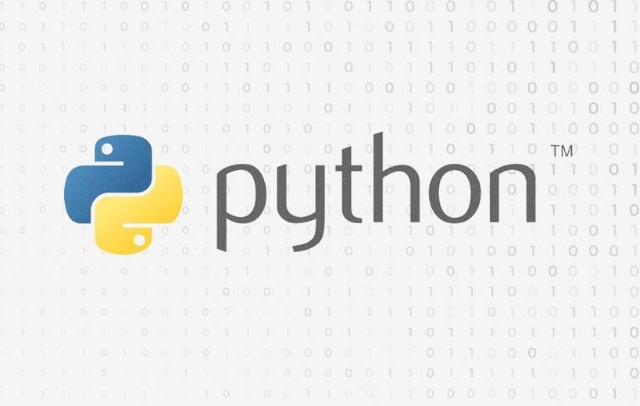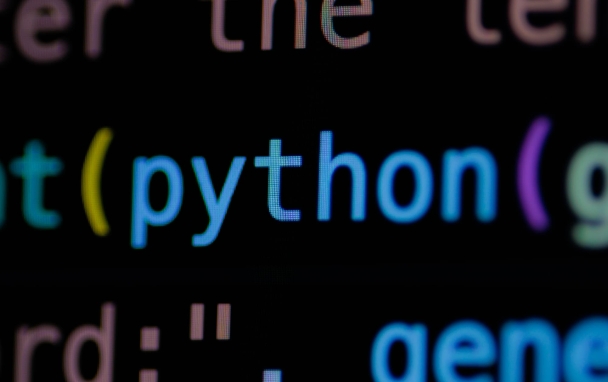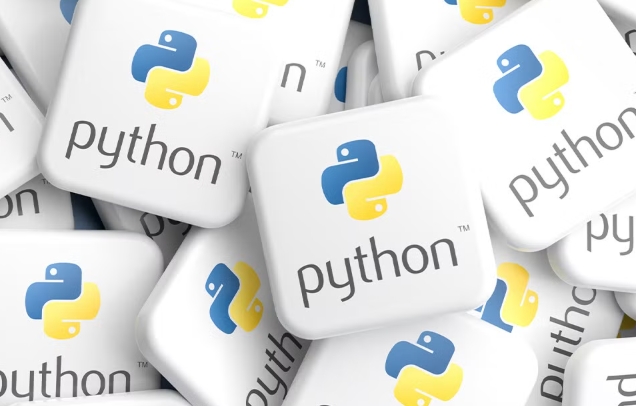Python manages memory automatically using reference counting and a garbage collector. Reference counting tracks how many variables refer to an object, and when the count reaches zero, the memory is freed. However, it cannot handle circular references, where two objects refer to each other but are unreachable. To address this, Python uses the garbage collector (gc module) to detect and clean up such cycles. Additionally, Python optimizes memory allocation for small objects through internal pools and reuses freed memory, improving performance. Users can control garbage collection with functions like gc.enable(), gc.disable(), and gc.collect(), though Python typically handles this automatically.

Python handles memory management automatically, which is one of the reasons it's so user-friendly. You don't have to manually allocate or free up memory like you might in lower-level languages such as C or C . Instead, Python uses a combination of techniques under the hood — mainly reference counting and a garbage collector for more complex cases.

Reference Counting Explained
At the core of Python’s memory management is reference counting. Every time you create an object, Python keeps track of how many references (or variables) point to that object. As soon as the reference count drops to zero — meaning nothing is pointing to it anymore — Python automatically frees up the memory used by that object.

For example:
x = "hello" # string object created, reference count = 1 y = x # reference count becomes 2 del x # reference count drops to 1
As long as at least one variable refers to the object, it stays in memory. When all references are deleted or go out of scope, the memory is released immediately.

This system is fast and efficient, but there's a catch: it can’t detect circular references.
What About Circular References?
A circular reference happens when two objects refer to each other, even if no external variable refers to either of them. In that case, their reference counts never drop to zero, even though they’re unreachable from your code.
Example:
a = [] b = [] a.append(b) b.append(a)
Now a contains b, and b contains a. If you do del a and del b, both objects still technically have a reference count of 1 because they reference each other — even though nothing else points to them. This creates a memory leak if left unhandled.
To solve this, Python has a separate garbage collector (gc module) that periodically looks for and cleans up these unreachable cycles.
You can control this behavior using the gc module:
-
gc.enable()– turns on automatic garbage collection -
gc.disable()– turns it off -
gc.collect()– manually triggers a collection cycle
By default, Python runs garbage collection periodically based on allocations and deallocations.
How Memory Is Allocated Internally
Python also does some internal optimizations to manage small objects efficiently. It uses pools and blocks to reduce overhead when creating and destroying many small objects (like integers, short strings, or small lists).
Here’s a simplified breakdown:
- Small objects (under 512 bytes) are handled by the Python memory allocator
- Larger chunks fall back to the system’s
malloc() - Python reuses freed memory when possible instead of asking the OS every time
This makes operations like list appends or dictionary updates faster than they would be with raw system calls.
Also worth noting: Python doesn’t always return memory to the operating system immediately. So even if you delete large chunks of data, your process may still hold onto that memory in case it needs it again later.
That’s basically how Python manages memory behind the scenes. The main takeaway is: you usually don’t have to worry about it, but understanding how it works helps avoid issues like memory leaks or performance bottlenecks.
The above is the detailed content of How does Python memory management work?. For more information, please follow other related articles on the PHP Chinese website!

Hot AI Tools

Undress AI Tool
Undress images for free

Undresser.AI Undress
AI-powered app for creating realistic nude photos

AI Clothes Remover
Online AI tool for removing clothes from photos.

Clothoff.io
AI clothes remover

Video Face Swap
Swap faces in any video effortlessly with our completely free AI face swap tool!

Hot Article

Hot Tools

Notepad++7.3.1
Easy-to-use and free code editor

SublimeText3 Chinese version
Chinese version, very easy to use

Zend Studio 13.0.1
Powerful PHP integrated development environment

Dreamweaver CS6
Visual web development tools

SublimeText3 Mac version
God-level code editing software (SublimeText3)
 How to use PHP combined with AI to achieve text error correction PHP syntax detection and optimization
Jul 25, 2025 pm 08:57 PM
How to use PHP combined with AI to achieve text error correction PHP syntax detection and optimization
Jul 25, 2025 pm 08:57 PM
To realize text error correction and syntax optimization with AI, you need to follow the following steps: 1. Select a suitable AI model or API, such as Baidu, Tencent API or open source NLP library; 2. Call the API through PHP's curl or Guzzle and process the return results; 3. Display error correction information in the application and allow users to choose whether to adopt it; 4. Use php-l and PHP_CodeSniffer for syntax detection and code optimization; 5. Continuously collect feedback and update the model or rules to improve the effect. When choosing AIAPI, focus on evaluating accuracy, response speed, price and support for PHP. Code optimization should follow PSR specifications, use cache reasonably, avoid circular queries, review code regularly, and use X
 python seaborn jointplot example
Jul 26, 2025 am 08:11 AM
python seaborn jointplot example
Jul 26, 2025 am 08:11 AM
Use Seaborn's jointplot to quickly visualize the relationship and distribution between two variables; 2. The basic scatter plot is implemented by sns.jointplot(data=tips,x="total_bill",y="tip",kind="scatter"), the center is a scatter plot, and the histogram is displayed on the upper and lower and right sides; 3. Add regression lines and density information to a kind="reg", and combine marginal_kws to set the edge plot style; 4. When the data volume is large, it is recommended to use "hex"
 python list to string conversion example
Jul 26, 2025 am 08:00 AM
python list to string conversion example
Jul 26, 2025 am 08:00 AM
String lists can be merged with join() method, such as ''.join(words) to get "HelloworldfromPython"; 2. Number lists must be converted to strings with map(str, numbers) or [str(x)forxinnumbers] before joining; 3. Any type list can be directly converted to strings with brackets and quotes, suitable for debugging; 4. Custom formats can be implemented by generator expressions combined with join(), such as '|'.join(f"[{item}]"foriteminitems) output"[a]|[
 python connect to sql server pyodbc example
Jul 30, 2025 am 02:53 AM
python connect to sql server pyodbc example
Jul 30, 2025 am 02:53 AM
Install pyodbc: Use the pipinstallpyodbc command to install the library; 2. Connect SQLServer: Use the connection string containing DRIVER, SERVER, DATABASE, UID/PWD or Trusted_Connection through the pyodbc.connect() method, and support SQL authentication or Windows authentication respectively; 3. Check the installed driver: Run pyodbc.drivers() and filter the driver name containing 'SQLServer' to ensure that the correct driver name is used such as 'ODBCDriver17 for SQLServer'; 4. Key parameters of the connection string
 python pandas melt example
Jul 27, 2025 am 02:48 AM
python pandas melt example
Jul 27, 2025 am 02:48 AM
pandas.melt() is used to convert wide format data into long format. The answer is to define new column names by specifying id_vars retain the identification column, value_vars select the column to be melted, var_name and value_name, 1.id_vars='Name' means that the Name column remains unchanged, 2.value_vars=['Math','English','Science'] specifies the column to be melted, 3.var_name='Subject' sets the new column name of the original column name, 4.value_name='Score' sets the new column name of the original value, and finally generates three columns including Name, Subject and Score.
 Optimizing Python for Memory-Bound Operations
Jul 28, 2025 am 03:22 AM
Optimizing Python for Memory-Bound Operations
Jul 28, 2025 am 03:22 AM
Pythoncanbeoptimizedformemory-boundoperationsbyreducingoverheadthroughgenerators,efficientdatastructures,andmanagingobjectlifetimes.First,usegeneratorsinsteadofliststoprocesslargedatasetsoneitematatime,avoidingloadingeverythingintomemory.Second,choos
 python django forms example
Jul 27, 2025 am 02:50 AM
python django forms example
Jul 27, 2025 am 02:50 AM
First, define a ContactForm form containing name, mailbox and message fields; 2. In the view, the form submission is processed by judging the POST request, and after verification is passed, cleaned_data is obtained and the response is returned, otherwise the empty form will be rendered; 3. In the template, use {{form.as_p}} to render the field and add {%csrf_token%} to prevent CSRF attacks; 4. Configure URL routing to point /contact/ to the contact_view view; use ModelForm to directly associate the model to achieve data storage. DjangoForms implements integrated processing of data verification, HTML rendering and error prompts, which is suitable for rapid development of safe form functions.
 What is statistical arbitrage in cryptocurrencies? How does statistical arbitrage work?
Jul 30, 2025 pm 09:12 PM
What is statistical arbitrage in cryptocurrencies? How does statistical arbitrage work?
Jul 30, 2025 pm 09:12 PM
Introduction to Statistical Arbitrage Statistical Arbitrage is a trading method that captures price mismatch in the financial market based on mathematical models. Its core philosophy stems from mean regression, that is, asset prices may deviate from long-term trends in the short term, but will eventually return to their historical average. Traders use statistical methods to analyze the correlation between assets and look for portfolios that usually change synchronously. When the price relationship of these assets is abnormally deviated, arbitrage opportunities arise. In the cryptocurrency market, statistical arbitrage is particularly prevalent, mainly due to the inefficiency and drastic fluctuations of the market itself. Unlike traditional financial markets, cryptocurrencies operate around the clock and their prices are highly susceptible to breaking news, social media sentiment and technology upgrades. This constant price fluctuation frequently creates pricing bias and provides arbitrageurs with






